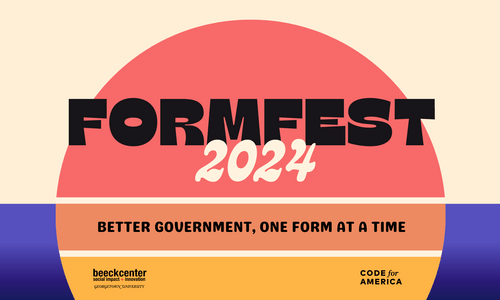
What do apraxia, aphasia, equitable use, affective networks, and EN 301 549 have in common? These are all topics that I spent time learning about recently as I prepared for the International Association of Accessibility Professionals (IAAP) exam for the Certified Professional in Accessibility Core Competencies (CPACC) credential.
When I considered taking the exam, I had been working on developing the skills that I use in my role. Preparing for this exam, I decided, would help me to expand the scope of my learning. Did I ever get more than I thought I had bargained for - it was quite a journey! In preparing for the exam, I learned so much about the much broader realm of accessibility issues and practices. Along the way I was exposed to many new topics that I now want to learn more about - both within and beyond web accessibility.
Why Certification?
Certifications in general are somewhat controversial, but whether you like them or dislike them, they are somewhat inevitable. Certifications are available for vocations and avocations from pet sitting to BASE jumping to web accessibility. Why are they so popular? By offering certifications, an organization is essentially identifying the baseline body of knowledge that its leadership has identified as a necessary foundation for professionals to effectively advance the organization’s goals.
In the case of the IAAP, language on the organization’s website indicate that these goals include helping organizations integrate accessibility into their products and infrastructure, and increasing the number of IT professionals around the world who possess necessary knowledge and tools to design, develop and deliver accessible solutions. Offering certifications and training to support those certifications arguably helps the IAAP to achieve those goals. The IAAP also lists a set of goals of the certification program on their website.
What is the IAAP?
The IAAP is a not-for-profit membership-based organization for individuals and organizations that are focused on accessibility or are in the process of building their accessibility skills and strategies. The organization was officially launched in March 2014 with a slate of 23 corporate founding members. As of July 2018, the IAAP now has over 1,500 members from 42 countries and over 85 organizational members.
As outlined in its Mission Statement, the organization was formed to “define, promote and improve the accessibility profession globally through networking, education and certification in order to enable the creation of accessible products, content and services.” The IAAP offers educational resources to its membership in the form of webinars and support for the M-Enabling Summit. Networking support is provided through the IAAP Connections website, where members can access community pages and participate and learn from discussions.
What is the CPACC credential?
The CPACC credential was the first credential offered by the IAAP, with the first exam seating offered in March 2016. It is intended to demonstrate broad, cross-disciplinary conceptual knowledge of accessibility principles and practices. Practitioners in roles that involve managing and supporting accessibility, but who may not necessarily be involved in designing, implementing, or evaluating the technical details of accessible solutions are the target population for this credential.
What is on the CPACC Exam?
The CPACC Exam consists of 100 multiple-choice questions in three broad topic areas. Those areas, and the portion of the exam content in each area are as follows:
- Disabilities, Challenges, and Assistive Technologies (40%) - This is where apraxia, aphasia, and many other forms of disability found their way into my studies. Along with the characteristics and categories of the disabilities themselves, the study materials I used provided information about applicable adaptive strategies and assistive technologies, both in the technology domain and in the realm of the physical world.
- Accessibility and Universal Design (40%) - While I was already pretty solid with the four principles that are the basis of the WCAG 2 standards, Universal Design principles such as equitable use were all new to me. I also learned about Universal Design for Learning, which is where understanding the role of affective networks came in.
- Declarations, Standards, Laws, and Management Strategies (20%) - Preparing for this portion of the exam opened my eyes to the wide range of laws and standards beyond the WCAG 2 Success Criteria. Understanding the laws of other countries, such as EN 301 549, and declarations an of international body, such as the UN Universal Declaration of Human Rights, reveals what we believe to be true about our rights human beings.
I relied on the CPACC Body of Knowledge document from the IAAP website to help me study, and I also completed the IAAP CPACC Certification Preparation course offered by Deque Systems as part of their Deque University offerings.
The exam is scored on a pass/fail basis which is determined based on an individual’s relative to the cohort from your exam window. The cumulative pass/fail rate for the CPACC exam as of the end of 2017 was 86%.
What Other Credentials Does IAAP Offer?
The IAAP identifies certification as a core mission of the organization, and its certification offerings have grown since the CPACC Credential was first launched. In addition to CPACC certification, IAAP offers the Web Accessibility Specialist (WAS) Credential for individuals with “regular hands-on experience in writing, remediating, or identifying accessibility issues in code” and “experience and knowledge of programmatic code elements, WCAG 2.0 standards, and contextual implications for end users of assistive technology”. Individuals who have passed both the CPACC exam and the WAS exam may claim the Certified Professional in Web Accessibility (CPWA) Credential.
Expected to launch in late fall 2018, the IAAP Procurement Specialist exam is targeted to intermediate (3-5 years’ experience) procurement professionals. According to information posted recently, “The IAAP Procurement Specialist exam is intended to express the skills of an intermediate level procurement professional but will also be of value to those more senior in the field, managers, and policy makers”. Three versions of the exam will be made available, focusing on Section 508, European Mandate, or International Private Sector procurement.
How Many Professionals Have Been Certified by the IAAP?
As of mid-2018, there are 589 individuals who have successfully passed the CPACC exam. This is up from 356 at the end of 2017, so the ranks of CPACC certificants are growing rapidly. Since its launch in June 2017, 152 Web Accessibility Specialists have been certified. The designation of CPWA has been awarded to 94 individuals who have successfully passed both the CPACC and WAS certification exams. These numbers don’t reflect the results of the June 2018 exam window.
How about you?
So, how about you - are you thinking of taking the CPACC exam? Here are my take-aways. To be honest, I found the amount of material covered by the exam to be a little overwhelming. The Body of Knowledge (BOK) document provided by IAAP is almost 50 pages long! There was a great deal of memorization of terms and concepts, many of which was new to me. It was quite a relief when I learned last week that I passed the exam.
I would definitely recommend study and sitting for the CPACC Exam to anyone who fits the description above (practitioners in roles that involve managing and supporting accessibility) who would like to expand and reinforce their knowledge base and show their commitment to advancement of accessibility practices. I learned a whole lot, and gained a greater awareness of the wide range of topics that are related to digital accessibility. Hopefully you too will find that it’s just the beginning of the journey!




